Christmas post!
Posted Monday, 1st December 2014
Here in The Angus, we like Christmas. We like Christmas a lot.
To get into the festive spirit we will be revealing an advent image every day until December 25th.
You can follow us on Twitter: @RPCLibrary or take a look at our dedicated Advent Calendar blog.
Merry Christmas from The Angus!
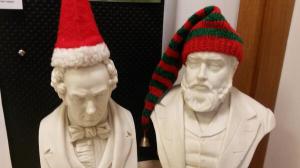 Categories: News
Categories: News Abingdon Baptist Church Library
Posted Wednesday, 26th November 2014
A Baptist Parochial Library
In the 18th and 19th centuries (and sometimes, even today) many Anglican churches kept small libraries of books to help vicars write sermons, and for the intellectual and moral improvement of trusted parishioners. A great deal of information is available on these collections, both in terms of what churches collected, and who read the books. The status of parochial libraries was even enshrined in law during the reign of Queen Anne.
Non-conformist denominations also gathered libraries during the same era, and for the same purposes, but these collections have not been widely studied, and are long overdue some academic notice. At least three notable Baptist libraries have been preserved in the Angus at Regent’s Park College. Yhe Broughton Baptist Library remains only in part, but the libraries from Bourton-on-the-Water and Abingdon have been maintained in tact, and can be consulted here in pretty much their original form.
Cataloguing of pre-1830 books from Abingdon Baptist Church has recently been completed as part of the HLF-funded Baptist History: the Hidden Treasure of a Nation and Beyond, meaning that records of the books can now all be consulted remotely. The whole collection contains around 500 volumes (including a handful of 19th century books which will be catalogued later in the project). Some 155 items have been newly catalogued, and a further 84 records updated, meaning that there are now 489 Abingdon items on Solo. The natures of the books themselves are on the whole not particularly out of the ordinary: as individual items, and their value is not particularly high, generally requiring only 1 or at most 2 zeros in their prices. Around a dozen items are one of fewer than 10 copies in the world. None are unique. The ‘average’ book catalogued was printed in the middle of 1707, in London, in English. However, as a coherent collection, the value and interest is very great.
The Abingdon library has traditionally been associated with the hymn writer and Baptist minister Daniel Turner. However, the books which have been catalogued recently are almost all from the bequest of the Tomkins family. The Tomkins family were associated with Abingdon Baptist Church from its very earliest days: a John Tomkins was a member of the congregation by 1656, and later became an assistant pastor. Wealthy brewers, and later financiers, the family continued to serve as elders, deacons and general benefactors to the Abingdon Baptists until at least the mid-19th century.
Although the bookplates specifically mention only William and Harding Tomkins, most of the books seem to have belonged to their cousin Martin Tomkins, [1] who was a Presbyterian minister in Stoke Newington until he began to display Unitarian tendencies. He was a friend of controversialist and fellow-Arian William Whiston, whose titles figure extensively in the collection. Martin spent a good deal of his life in London suburbs in Middlesex and Essex, but was probably born in Abingdon into the Baptist family there. His books are mostly identifiable by his initials ‘MT’ written on a front endpaper, although some have his signature on the title page. Helpfully, he has usually also noted the date of his purchase, and the price he paid for the book.
There are books from a few other sources too. Some of Turner’s own books have been catalogued. Robert J Rogers; Robert Humphrey Marten; W.T. Rosevear; (all Abingdon Ministers), and Benjamin Williams of Reading all contributed to the collection in a small way.
Postscript
While researching for this short article, an additional book from Martin Tomkin’s collection was discovered for sale: Bernardini Ferrarii Mediolanensis theologi De ritu sacrarum Ecclesiæ Veteris concionum (Utrecht, 1692). Furthermore, when researching why this book was not part of the Abingdon Collection an original catalogue of the Tomkin’s bequest was discovered at the Bodleian amongst the John Johnson Collection of Printed Ephemera. The Bodleian had no idea that the library described in the catalogue was still extant, or that it was housed a few hundred yards away. Having consulted the catalogue[2] in the new Bodleian rare books reading room, it was clear that the book was one of a very few strays which were not now in the Angus Library. The college has been able to acquire it and reunite it with the Abingdon Collection.
[1] See also Hambleton, ‘A sweet and hopeful people’ p. 93.
[2] A catalogue of books, given by Mr. Harding Tomkins, of Fishmongers-Hall, London, to Mr. William Tonkins, of Abingdon, in the county of Berks, &c. In October, 1755 (London, 1755) http://solo.bodleian.ox.ac.uk/primo_library/libweb/action/dlDisplay.do?vid=OXVU1&docId=oxfaleph013549111
Categories: Books Cataloguing News
Researching ‘For Liberty Against Tyranny’
Posted Wednesday, 24th September 2014
I joined the exhibition team at The Angus as I wanted the chance to tell people about World War 1. Going through the material I researched you soon realise the global impact the war had. It certainly wasn’t just about the trenches. Civilians across the world were affected as well. Price rises, food shortages, mail delays, bombings in Scotland as well as the human sacrifice of many millions. Doing the research has been worthwhile as has listening to lectures and a talk. From this I’ve learned more about the war and how it affected other peoples’ lives.
Holford House, used by St Dunstan’s
I discovered that Regent’s Park College helped in the war. Looking through its minutes’ book in 1916 the College let its premises to St Dunstan’s, the hostel that retrained blinded ex- soldiers and sailors. Two people who were involved in letting it out were the Baptist minister Rev Shakespeare and David Lloyd George who was shortly to become Prime Minister. The move of Regent’s students to Hackney College meant the temporary dissolution of G.P. Gould’s effective presidency over the College, but he too was supportive of the plans to support St Dunstan’s life-changing work and, freed from a large extent of his duties, focused on improving the system of work in College in cooperation with Hackney College and New College.
Dr Ellen Farrer
Other materials I have found interesting were the diaries and chronicles of Dr Ellen Farrer who worked in a hospital in India through this period and for many years either side. The descriptions and subsequent insight you glean from how people lived a hundred years ago especially in another continent brings into sharp contrast the difference in the conditions they experienced.
Working on the project has also given me more experience in doing exhibition work which is useful as I like explaining history to others. Giving people a chance to learn something new is always rewarding whether it is for you or for the visitor. It also gives me a chance to add to my skills I learnt from my post graduate diploma in museum studies from Leicester. The team at The Angus are all a good bunch being easy going and willing to help and pass on a mindful of information as there are lots of books here.
For the exhibition we started back in early June and had our first team meeting on the 10th discussing the themes topics and choosing who wanted to do what. My primary focus has been on missionary work seeing what role that played in the war. Meetings here have been a good opportunity to bring more ideas to the table helping ensure the exhibition is a success. Most of the research by now has been done and we are seeing how it all fits together making sure we are putting our ideas and discoveries through on to the panels and guides in the weeks ahead ensuring that the stories we are telling will be heard.
David Cox, Volunteer Exhibition Researcher
For Liberty Against Tyranny tickets available online.
Categories: Events Exhibitions VolunteeringFor Liberty Against Tyranny: Free WW1 Exhibition and Talks
Posted Monday, 15th September 2014
Booking now open!
10th – 15th November, Regent’s Park College, Oxford
An exhibition looking at the events of the First World War and how these affected the thoughts and actions of non-conformists. Featured will be never before seen items such as correspondence from Prime Minister David Lloyd George, emergency passports issued at the outbreak of war and photographs from international war fronts.
Categories: Events Exhibitions News
History Twilight Session: Wednesday 8th October
Posted Tuesday, 9th September 2014
History teachers – would you like a unique opportunity to handle and work with original documents, images and artefacts at an Oxford college? A chance to use collections to help to create accessible, imaginative and stimulating resources to use with your Key Stage 3 and 4 pupils?
If so, The Angus Library and Archive, Regent’s Park College, Oxford, would like to hear from you!
We have archive material on subjects including the slave trade, the role of women, war, empire and imperialism and we would like teachers to be involved both in the developmental stage and testing of new educational resources using these materials. When the resources have been completed, all schools will be able to access the materials from our website and also engage with other teachers and users exchanging ideas and comments for using them.
We refund teacher travel expenses, and provide refreshments.
Book early to avoid disappointment as places are limited.
Wednesday 8th October, 4.30pm, Regent’s Park College, Oxford
Book online or contact katie.pearce@regents.ox.ac.uk
Categories: Events Opportunities SchoolsMeasured Excitement: The Arrival of Artefacts from Grenfell’s Congo Voyage
Posted Tuesday, 29th July 2014
There are an abundance of treasures and curiosities housed in The Angus, but something we’ve always been lacking is a nineteenth-century sphygmomanometer!
The arrival of a large wooden box purporting to contain artefacts relating to the work of the cartographer and Baptist Missionary, George Grenfell (1849 – 1906), has managed to surpass all of our expectations, not only do we now have in our possession a sphygmomanometer, but also a chronometer, barometer, sextant, ‘hack’ watch, spirit level, stethoscope, microscope, artificial horizon, a pair of very lightweight binoculars, two telescopes and three thermometers. We’re ready to observe and measure anything!
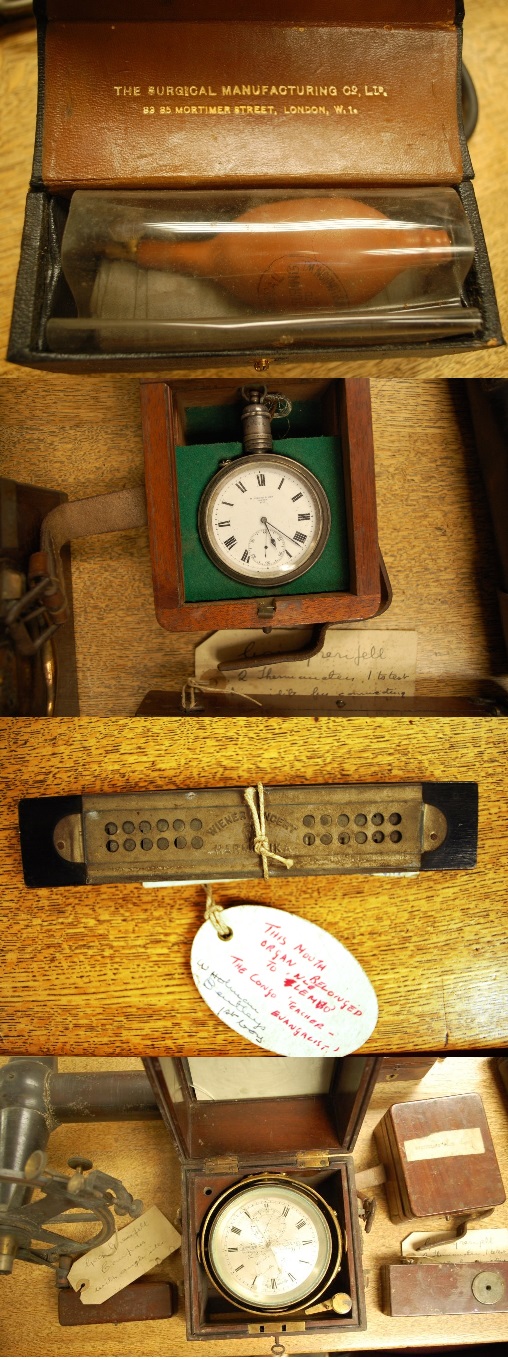
Such an extensive array of equipment would have been vital to the success of the first cartographer to map the Congo Basin. Between 1880 and 1886, a number of explorations of the Congo Basin in western Africa were led by Grenfell. Alongside his team, Grenfell explored and mapped the little-known tributaries, thus opening the central African interior to further expeditions.
Some more unusual items from Grenfell’s collection which are now in The Angus include a cloth pouch of medical tools, the bark of the tree under which Livingstone’s heart was buried and a mouth organ belonging to Mantantu Dundulu.
Work must now begin to preserve the story behind these wonderful artefacts, and we hope to exhibit these in the future. More to follow soon on the life of George Grenfell…
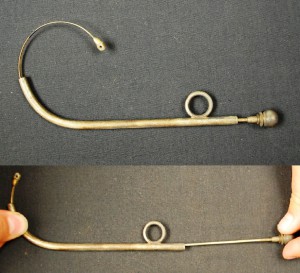
The use/s of some of the items belonging to Grenfell is/are not entirely obvious; if you happen to know what this miniature instrument is, please do leave us a comment!
Katie Pearce, Learning and Participation Officer
Categories: Exhibitions NewsNobody expects the Spanish Inquisition
Posted Thursday, 10th July 2014
Works of Augustine, (Basle: Froben, 1569) 1/2/1000
Most people have an image of the Spanish Inquisition in their minds as the bloodthirsty massacre of 16th century Spanish Protestants in retaliation for the blasphemies of Luther. Although not a pleasant exercise of authority, the Spanish Inquisition was rather less murderous and more bureaucratic than tends to be imagined. In many ways it acted as a civil service not just to the Roman Catholic Church, but also to the monarchies in multi-kingdomed Spain.
The Inquisition was founded in 1478: five years before Luther’s birth, and several decades before he pinned anything to anyone’s door. It was largely set up to monitor Jews and Muslims who had converted to Christianity, but were suspected of continuing to practice their ancestral religions in secret[1]. Given that many of these ‘converts’ had renounced their former religions against threats of violence and death, or had even been forcibly baptised, their lack of wholeheartedness is hardly surprising. Up to 5000 individuals were put to death by the Church during the course of the Inquisition. However, given that it was not totally disbanded until 1834, this averages out at about 14 executions each year, which is in no way out of line with executions carried out in other European countries at this time. Additionally, although heresy trials were the most important work of the Inquisition, many other far more minor legal cases relating to marriage law, blasphemy and general moral infractions. Much the same happened at the Court of Arches in Protestant England.
One function which the Inquisition carried out with great enthusiasm was censorship. The invention of the printing press in distant Germany in the 1450s caused something of an information explosion, and heretical or generally suspect texts could now reach large audiences relatively quickly. The Inquisition – in common with most civil and ecclesiastical authorities – drew up lists of undesirable books known as the Index Librorum Prohibitorum (Index of Forbidden Books), which was broadly in line with the first Pope-approved version of 1559[2]. Initially, books on the list were banned entirely, but this soon proved unworkable, and the subtler suppression of pen and ink was applied to many banned books.
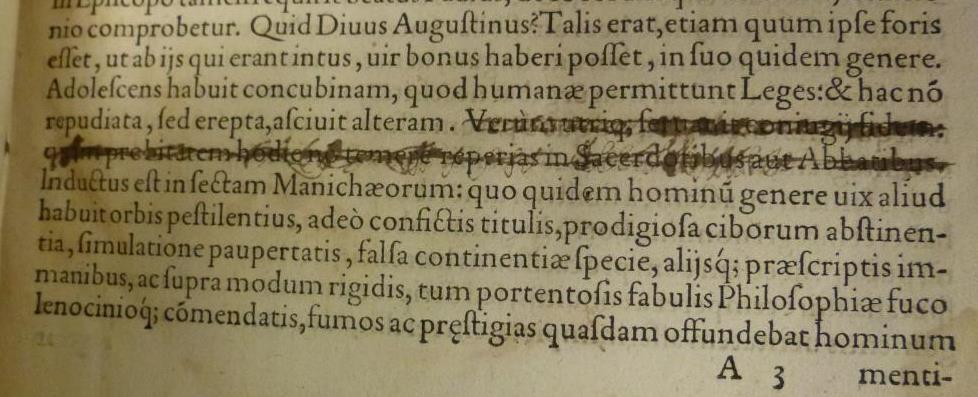
A good example of this has been found in the Angus Library: Primus [-decimus] tomus eximii patris, inter summa latinae ecclesiæ ornamenta ac lumina principis, D. Aurelii Augustini Hipponensis episcopi [The Works of Augustine] (Basle: Froben, 1569). The works of Augustine were, of course, highly thought of by the Roman Catholic Church, but this edition printed in Protestant Basel had some unfortunately Calvinistic footnotes, and left in a few Augustinian sentences about the moral probity of clergy which the Inquisition would have preferred to have been omitted. So a censor crossed them out. To ensure that the censorship was genuine, each copy of a censored work – and each volume of each copy – were signed and dated by the by the authorities on the final page.
The writings of an Algerian author, printed in Switzerland, bound in Germany, and censored in Spain, are now shelved in England. This is less unusual than might be expected. Books forbidden to Catholic Europe not infrequently ended up in Protestant England: Thomas James even used the Index Librorum Prohibitorum as a shopping list[3] for good books to fill the shelves of the Bodleian Library, and plenty of English gentlemen liked to buy impressive books as souvenirs of their Grand Tour. This book’s route to the Angus Library is not entirely clear, but it is safe to say that no-one had been expecting the Spanish Inquisition in a Baptist library.
[1] Henry KamenThe Spanish Inquisition: A Historical Revision. (London, 1998)
[2] The final Papal Index was only withdrawn in the 20th century at Vatican II
[3] P.108 Fred Lerner Story of Libraries: From the Invention of Writing to the Computer Age (New York, 1998)
Volunteering at The Angus
Posted Monday, 9th June 2014
I have been volunteering in The Angus for almost a year now, and in that time a lot has happened. I’ve been involved in the creation of three successful exhibitions and am now starting work on my fourth. We’ve also seen guest speakers, run school sessions, and this week I’m off to Glasgow for some training. There is always something to be getting on with, whether it’s searching the archive for new objects to display in exhibitions or prepping text for an exhibition guide or new display. I’m learning a lot and I’m very grateful to everyone here.
The Angus never ceases to amaze me with the sheer diversity of what I find. It’s often the little things that are the best; snippets from people’s lives that are still seem so accessible today. A personal favourite of mine, found while researching our last exhibition Stethoscopes and Petticoats, is a letter written by missionary and nurse Florence Cann. Writing during the Second World War she asks, “I wonder why you thought I had left this place. After the B’ham Blitz and two sea journeys during this war I was not likely to run away from bombs.”
By Sukie Trowles
Categories: Exhibitions Opportunities VolunteeringNew Vacancy: Archivist
Posted Friday, 6th June 2014
Archivist
The Angus Library and Archive
1.5 Years, part-time (2 days per week)
£20,000-£22,000 pro rata DOE
We are looking to recruit a motivated person with formal qualifications and experience in archiving procedures and practices to fill this important and interesting post. The position will entail: working with the College Librarian, Library Assistant and Library Administrator to answer enquiries and provide a research service based on the various manuscript and printed collections held in The Angus Library and Archive. It will also involve accessioning, sorting and cataloguing new deposits to the archive and manuscript collections held in The Angus Library and Archive to appropriate standards, as well as other duties outlined in the job description. Experience and knowledge of archiving procedures is essential as well as a keen eye for detail and excellent IT literacy. Experience of ADLIB and knowledge of a Classical or European language is desirable but not essential.
Flexible working hours are negotiable for the right candidate.
For more information regarding this position or to request an information pack please contact The Angus Library and Archive, angus.library@regents.ox.ac.uk or (01865)288142. For more information, and to view the job description please visit: www.rpc.ox.ac.uk
Closing date is 5pm Friday 4th July 2014. Interviews will be held on Thursday 17th July 2014.
Categories: UncategorizedThe Half-Way Point
Posted Monday, 19th May 2014
The second quarter of 2014 marks the official half-way point in the project. Although there is still lots to do, it would be a good idea to reflect upon the achievements of the ‘Baptist History: Hidden Treasure’ project thus far.
The beginning of 2013 can be categorized as the development segment of the Delivery Phase. It was in this segment that the project team was recruited and inducted, and the activities could be thoroughly discussed in order to be swiftly implemented. By Autumn 2013 four out of the five new members of staff had already been recruited and were settling into their duties. With a Learning & Participation Officer creating and organising the outreach side of the project, two Cataloguers to catalogue the Angus collection, and an Administrator to support them, the Activity Plan was put into action. Of course, it is not just the employees of the Angus Library who make up the project team, but also the volunteers who make such a difference by giving up their own time to assist with both the archiving and the exhibition research & interpretation.
Work quickly began on the first exhibition of the Project: “Slavery: the Historical and Modern Perspectives” with much of the research being carried out by our team of dedicated volunteers. The exhibition was opened to the public in October/December 2013 and was an immediate success. The brand new website further enhanced the impact of the exhibition as well as providing a platform for the public to search for details of ancestors who worked as missionaries for the BMS – a task carried out, again, by our enthusiastic and diligent volunteers.
Schools became the focus in early 2014 with two archive taster days being held in the Angus in January. The feedback received was wholly positive and supportive, both from the students and from The Angus staff. The schools resources are now in the process of being launched from our website. If you are interested in using these resources they are available to be downloaded for free. We also welcome any feedback on these resources which you can submit using the ‘contact us’ feature.
The outreach phase was, and is, the ‘visible’ part of the project, yet much of the project happens behind the scenes. Our two cataloguers, who frequently blog about the weird and wonderful aspects of The Angus, have unearthed much of the ‘Hidden Treasure’ which the rest of the project team is then able to use to enrich other aspects of the project, such as the exhibitions and school resources. Our second exhibition: “Stethoscopes & Petticoats: the Changing Roles of Non-Conformist Women” used some of the material newly discovered in our archives. Who knows what we may find for our next exhibition on Baptists in Conflict?
With many upcoming milestones and activities to look forward to, the project still has a long way to go. However, it is clear that things are in full swing and it’ll only get better from here.
by Anja Clark
Project Administrator
Categories: News
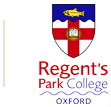
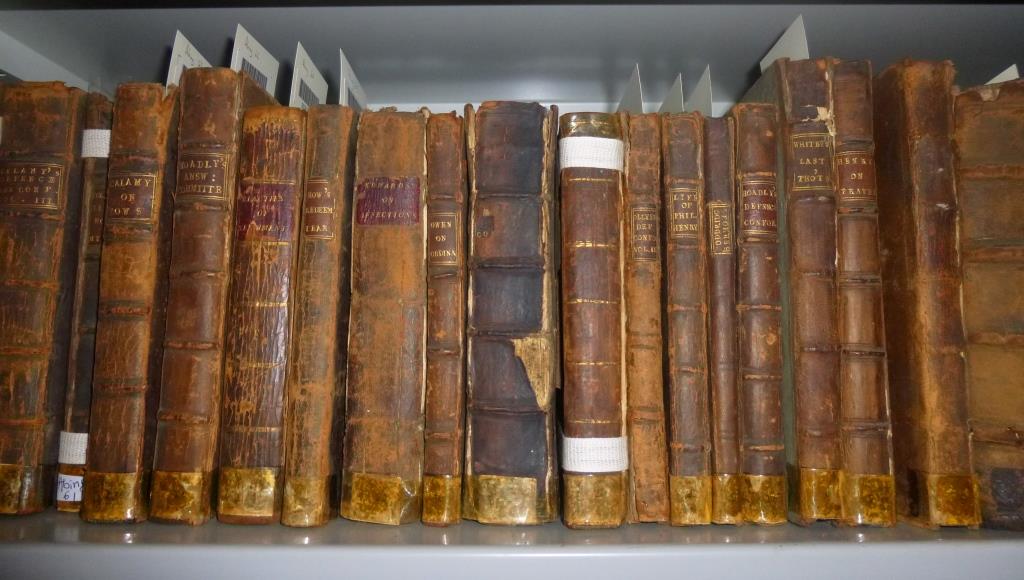
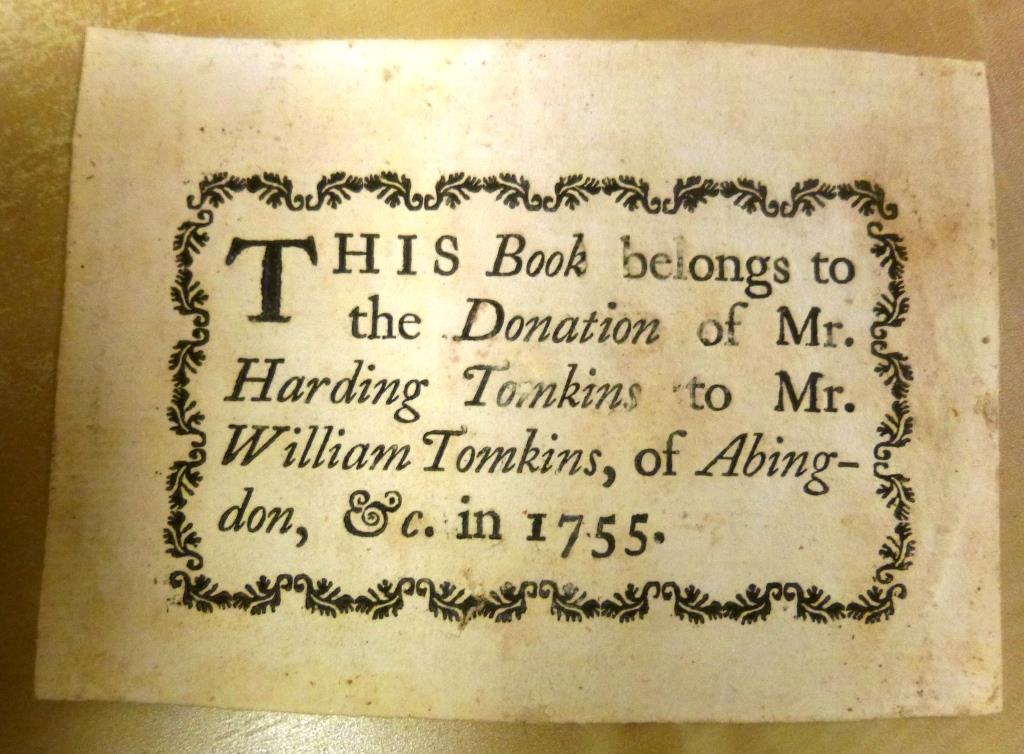
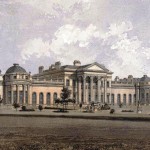
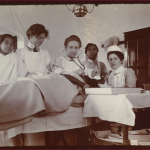
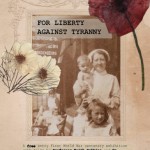

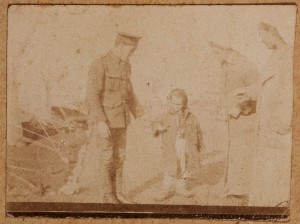
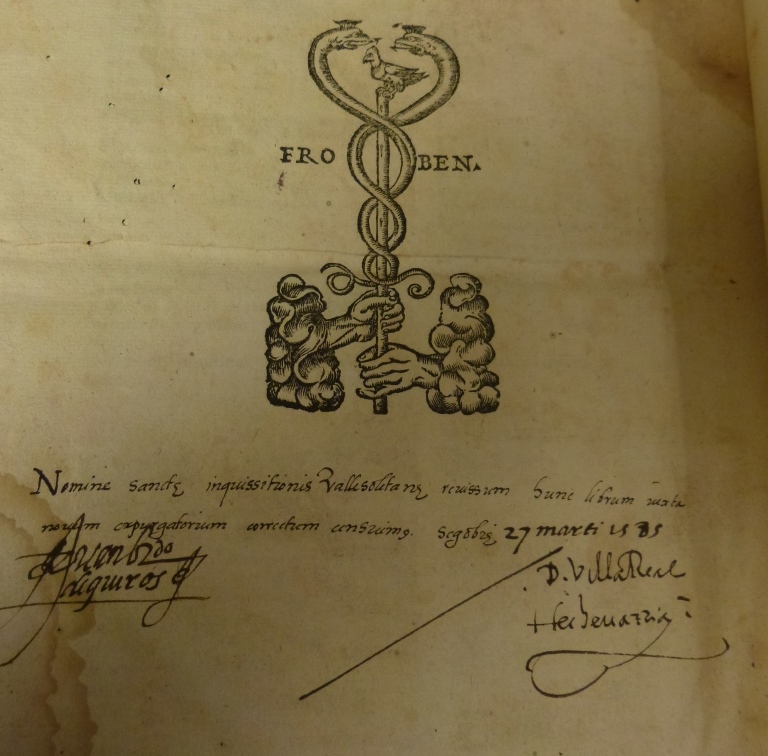

Recent Comments